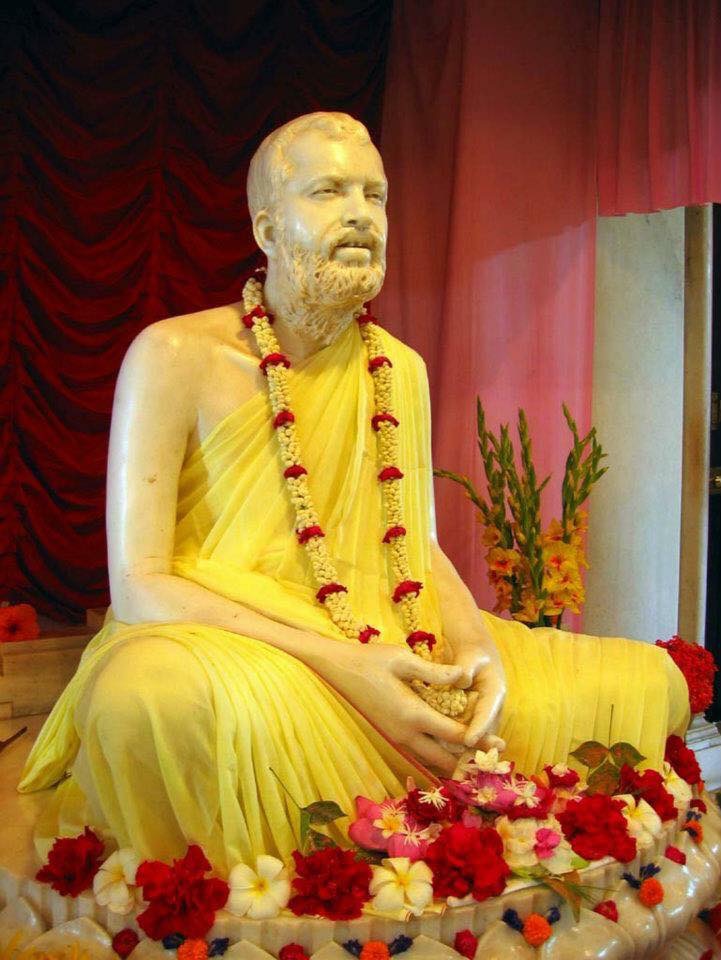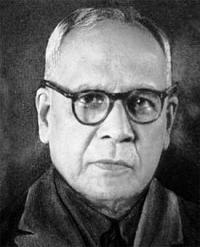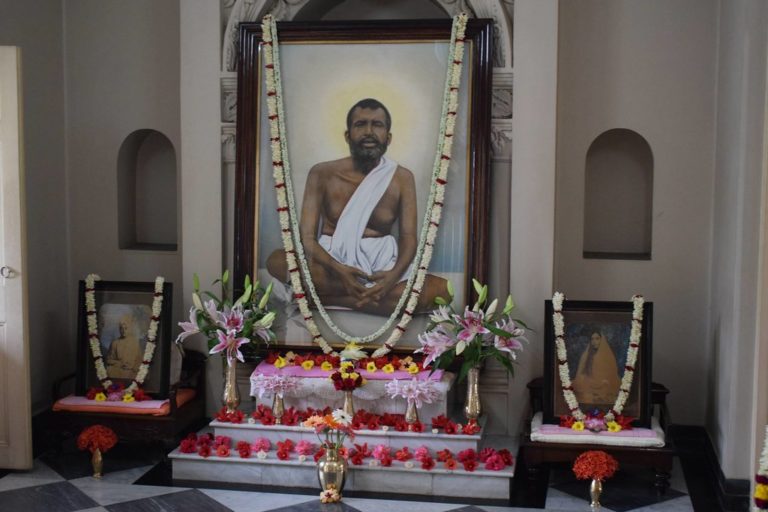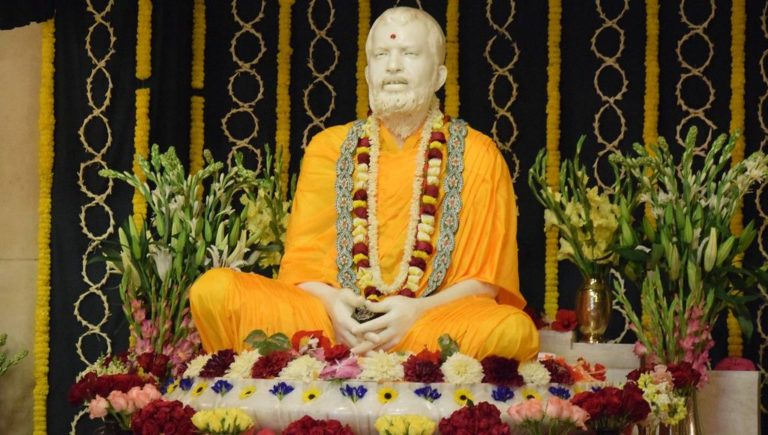(Continued from the previous issue…)
In the previous issue we saw, in the light of Sri Ramakrishna’s teachings, 1) why places of pilgrimage especially manifest the presence of god and 2) the necessity for cultivating a pre-pilgrimage mindset prior to visiting holy sites. By cultivating the pre-pilgrimage mind-set before visiting places of pilgrimage, spiritual aspirants are able to build a momentum toward a specific spiritual mood and an introspective mind-set. This mind-set, in turn, helps pilgrims to counter the external and internal distractions in places of pilgrimage, and also helps them to “easily become spiritually awakened.”1 In this issue we will discuss the practical application of the pre-pilgrimage mind-set in the light of the teachings of Sri Ramakrishna, Sri Sarada Devi, and Swami Vivekananda.
As already discussed, Sri Ramakrishna before embarking on a pilgrimage emphasised the importance of cultivating a spirit of devotion: “For one who is endowed with devotion, devotion increases with the influence of holy places. And as for one who does not have that, what will he gain?”2 In the previous issue, we discussed how external distractions like the presence of ‘lust and greed’ in places of pilgrimage, and internal distractions like the ‘conflicting nature of the human mind’ are detrimental for spiritual aspirants who wish to experience a spiritual transformation during their pilgrimage. It is not sufficient simply to have a spirit of devotion; we must also cultivate vyakulata or intense spiritual yearning, as well as a devotional focus and introspective mindset. Understanding this necessity, Sri Ramakrishna would develop “a specific spiritual mood” before entering a place of pilgrimage. Swami Saradananda writes, “The Master told us many times that he visited each holy place with a specific spiritual mood in mind.”3. Sri Ramakrishna would often say sadhan korte hoy, ar ekta kono bhav ashray korte hoy, “One must do spiritual practices and also take refuge in a definite spiritual attitude.”
For one who is endowed with
devotion, devotion increases with
the influence of holy places.
However, the problem for spiritual aspirants is that Sri Ramakrishna does not further elaborate on how to cultivate this “specific spiritual mood” or any of the other elements for cultivating a pre-pilgrimage mindset. Moreover, his own mind—as he himself put it—was like a “dry matchstick”4 in that it could easily ascend towards the Divine at the slightest stimulation. But Sri Ramakrishna’s extraordinary state of mind is simply too high an ideal for the majority of spiritual aspirants to emulate.
In this regard, we find a great deal of practical, down-to-earth advice in Swami Vivekananda’s “practical training”5 to Margaret Noble (Sister Nivedita’s pre-monastic name), prior to their journey to Amarnath in 1898.6 Swamiji’s advice can help all spiritual aspirants to cultivate a pre-pilgrimage mindset. His instructions were especially helpful to Margaret Noble as she had only arrived in India on 28 January 28 1898—just five months before her trip to Amarnath—and possessed very little knowledge of the history, culture, and spiritual heritage of India. Swamiji’s pre-pilgrimage training of Sister Nivedita consisted of a fourstep process. First, he prepared her mind for the pilgrimage by spending countless hours discussing the historical, cultural, mythological, philosophical, and spiritual significance of Amarnath, including Shaktism, Shaivism, and Advaita Vedanta. He also removed hidden cultural and religious biases within her mind which would have prevented her from assimilating the spirituality of Shiva and Uma, and in a broader sense, the spiritual heritage of India. Second, for this trip Swamiji chose a particular spiritual theme for Margaret Noble, which was compatible with her nature, upbringing and spiritual disposition. Third, after sufficient training, both the teacher (Swamiji) and the student (Nivedita) separately withdrew from external activities into meditation, and contemplated upon the place of pilgrimage in the light of the specific theme chosen by Swamiji. Fourth and finally, on the eve of their pilgrimage, she distributed alms and secured the blessings of local sadhus.
Let us now examine each of these four stages in greater detail.
First stage: Removing cultural and religious biases and acquiring historical, cultural, mythological, and spiritual knowledge of the pilgrim centre to be visited.
Sister Nivedita records that three months prior to their pilgrimage to Amarnath, Swami Vivekananda began —first in Belur and then in Almora—to prepare Nivedita for her impending journey. In his discussions with her, though Swamiji covered the entire landscape of India’s historical and spiritual heritage, he especially emphasised the mythology of Uma and Shiva. Nivedita describes Swamiji’s teachings on Shiva and Uma in Almora as intensely dualistic and devotional at times: “In the mornings, we still had long talks…on the history of Siva-worship… Another day coming at sunrise when the snows could be seen, dawn-lighted from the garden, it was Siva and Uma on whom he dwelt—and that was Siva up there, the white snow-pikes, and the light that fell upon Him was the Mother of the World!” However— at times—when Swamiji’s mind soared to the Absolute realm, he described Shiva not as the personal God or as the inner-controller (antaryamin) but as the all-pervading Divine Consciousness. She records, “For a thought on which at this time he was dwelling much was that God is the universe—not within it or outside it and not the universe God or the image of God—but He it, and the All.”7
Here, Swamiji was obviously influenced by Sri Ramakrishna’s teachings on vijnana, a state in which he realised that Brahman “has become the universe and its living beings”8 or Brahma satyam Jagat satyam, Brahman is real and the Universe is real.9 In addition, he says that this realm of vijnana can only be experienced by Ishvarakoṭis, eternally free souls and not by jivakotis, bound souls.10 Sri Ramakrishna considered Narendranath, later Swami Vivekananda, to be an Ishvarakoti.11
Sister Nivedita had an intellectual and philosophical bent of mind, and hence it was important for her to learn about Shiva from the different philosophical standpoints. She further explained that Swamiji did not merely restrict his teachings to the spiritual: “But it was not religion only that he poured out upon us. Sometimes it would be history. Again, it would be folk-lore.”12
Apart from all the knowledge Swamiji imparted to Margaret Noble, the devotional and spiritual fervour with which he conveyed this knowledge left a tremendous impression upon her. He did not merely convey dry knowledge; instead, he injected his own bhava or subtle spiritual emotion and feelings for Shiva and Uma into his teachings. She describes Swamiji’s deep love for Shiva at this time: “He had a surpassing love for Mahadeva…[the] very air of the Himalaya was charged for him with the image of that ‘eternal meditation’ that no thought of pleasure could break….[H]e understood…the meaning of the nature-story that made the Ganges fall on the head of the Great God, and wander in and out amongst His matted locks, before she found an outlet on the plains below. He had searched long for the words that the rivers and waterfalls uttered amongst the mountains, before he had realised that it was the eternal cry ‘Bom! Bom! Hara! Hara!’”13 Nivedita, being a competent spiritual aspirant, was able to receive this transmission of spiritual emotion. This had the effect of making Shiva and Uma come alive in the heart and mind of Nivedita, during the trip and afterwards as well (a point we shall discuss in the next article).
Next, Swamiji removed the hidden cultural biases about India from Margaret Noble’s mind. Anyone who wants to assimilate the spirituality of India must understand the link between its culture and its spirituality. When British citizens visited British-ruled India in the 19th century, it was natural for them to feel ethnically and culturally superior to the colonised India. Margaret Noble initially had such cultural biases to some extent. After initiation when Swamiji “asked her now to which country she belonged ”, She described her own “passion of loyalty and worship for the English flag, giving it much of the feeling that an Indian woman would give to her Chosen Deity.”14 Understanding her attachment, Swamiji was keen to remove this bias from her mind, as he knew that it would be an impediment for both her spiritual life as well as for her future work in India. Unwilling to “tolerate blindness of half-views and prejudices born out of ignorance”, Swamiji “pointed out errors in her judgements and even scolded her”: “Really, patriotism like yours is sin!” 15 She continued, “These morning talks at Almora, then, took the form of assaults upon deep-rooted preconceptions—social, literary and artistic — or of long comparisons of Indian and European history and sentiments, often containing extended observations of very great value. But he had revealed a different standpoint in thought and feeling, so completely and so strongly as to make it impossible for her to rest, until later, by her own labours, she had arrived at a view in which both these partial resentments stood rationalized and accounted for.’16
Anyone who wants
to assimilate the
spirituality of India
must understand
the link between its
culture and its
spirituality.
Fortunately, Swami Swarupananda, a brother-disciple, helped Nivedita to understand Swamiji’s ideas. His elucidation “helped her to understand the atmosphere in which they lived. He formed a sort of link between her Master’s mind and her own, and Nivedita was grateful to him for all he did for her. He taught her the Gita, asked her to offer her past at the feet of Ishwara. From him she learnt to meditate.”17 Though it caused dissent and conflict at times, Swami Vivekananda was keen to remove the hidden western cultural biases within Nivedita’s mind, which would otherwise prevent her from assimilating the essence of Uma and Shiva, and in a wider sense, the spirituality of India. Without this spiritual power and transformation, she would be unable to see Shiva in the Ice Lingam in Amarnath and serve India with her whole heart and soul.
The main purpose of acquiring various types of knowledge is to further deepen shraddha or one’s faith in the holy place to be visited and its presiding deity. Sometimes pilgrims coming from abroad—or even within India—may have doubts arising either from cultural bias, religious intolerance, or even atheism. Sri Krishna explains to Arjuna in the Bhagavad Gita how this doubting mind prevents one from making spiritual progress:
अज्ञशचाश्रदधानश्च संशयात्मा विनश्यति।
नायं लोकोऽस्ति न परो न सुखं संशयात्मनः।। 4.40
“The ignorant, the man without shraddha, the doubting self, goes to destruction. The doubting self has neither this world, nor the next, nor happiness.”
It is possible that even sincere spiritual seekers may have doubts or may not fully appreciate the spirituality of a holy place. However, if they have shraddha and are aware of the limitations of their own knowledge and experience, they will seek spiritual solutions through sincere questioning and debating, followed by contemplation and meditation, as in the case of Nivedita described above.
Hence, if spiritual aspirants desire to make a pilgrimage fruitful, in addition to acquiring knowledge beforehand, they should also strive to remove hidden biases which may prevent them from accepting the sanctity and spiritual power of the holy place they plan to visit and the reality of its presiding deity. In other words, to derive maximum benefit from their impending pilgrimage, spiritual aspirants must first acquire knowledge—historical, mythological, cultural, and spiritual—about the pilgrimage site beforehand and then attempt to convert this knowledge into love in their heart for the holy place and its presiding deity. This is the first stage of cultivating the pre-pilgrimage mindset.
Second stage: Choosing a specific theme
After acquiring the necessary knowledge, the next step for aspirants is somehow to integrate the knowledge into their very being by choosing a spiritual theme or mood for the pilgrimage which is compatible with their nature and upbringing. If the theme is authentic, then the spiritual aspirant can further cultivate and integrate the spiritual mood. As already discussed, Sri Ramakrishna mentions that before going to a place of pilgrimage, he would cultivate a specific spiritual mood. He also describes the two different types of dispositions for spiritual aspirants: “A man born with an element of Shiva becomes a Jnani; his mind is always inclined to the feeling that the world is unreal and Brahman alone is real. But when a man is born with an element of Vishnu, he develops an ecstatic love of God.”18 While it is true that aspirants normally possess tendencies toward knowledge and devotion, there will be one pre-dominant tendency over the other. In Nivedita’s case, she had an intellectual bent of mind, a quality of Shiva. However, even for aspirants with the quality of Shiva, Sri Ramakrishna encouraged the path of devotion, i.e., the harmonious development of head and heart.
The difficulty that many pilgrims face is to know and understand their own nature and disposition. Such an understanding requires either spiritual maturity or a spiritual teacher. Margaret Noble had only recently arrived in India, and was still a novice with very little knowledge of India and its spiritual greatness. For this reason, Swami Vivekananda himself, her enlightened teacher, had chosen a specific theme for her pilgrimage, which was consistent with her leaning toward knowledge. Knowing her dedication, Swamijii decided that she was to be “dedicated unto Shiva” for the work of India, and focused on this particular theme to the exclusion of all else. She describes Swamiji’s exclusive focus on Uma and Shiva before their trip: “Several months later [prior to the trip to Amarnath] he [Swamiji] never talked of any of the gods save Uma and Siva. For Siva and the Mother made the great workers. Yet I sometimes wondered if he knew at this time how at the end of every theme was bhakti.”19
Third stage: Withdrawing into meditation and cultivating an introspective mindset
Hence, as the time of pilgrimage neared, Nivedita, equipped with the proper knowledge, theme, and bhava, withdrew herself from other external activities to further cultivate and deepen her “spirit of devotion”. She did this externally by undergoing physical austerities such as fasting, living in solitude, etc., and internally by meditating and contemplating on Uma and Shiva. It is this tapasya that gives an introspective and focused mindset necessary for a pilgrimage.
In addition to preparing Nivedita’s mind, Swamiji withdrew himself from the company of others after deciding to go to Amarnath. Nivedita records, “[as] we sat at lunch, the Swami invited his [spiritual] daughter [referring to herself] to go to the Cave of Amarnath with him, and be dedicated to Siva…. From this time we saw very little of the Swami. He was full of enthusiasm about the pilgrimage and lived mostly on one meal a day, seeking no company, save that of sadhus. Sometimes he would come to a camping-ground, beads in hand.”20
Fourth stage: Serving sadhus and securing blessings from them
Prior to embarking on the pilgrimage to Amarnath Cave, Swamiji took Nivedita around to meet different sadhus, so that she would receive their blessings for a successful pilgrimage. She writes, “That afternoon [on the day before their pilgrimage] he took his [spiritual] daughter [meaning Nivedita herself] round the camp to be blessed, which really meant to distribute alms…. We stayed a whole day, at this village of the shepherd, to keep ekadasi, and early next morning the pilgrims left.”21
In the next article, we shall further discuss how Swami Vivekananda’s training of Nivedita prior to her pilgrimage, not only facilitated her recognition of the “living Shiva” in Swamiji after his darshan at Amarnath, but also brought about her own remarkable transformation— first, from Margaret Noble to Sister Nivedita, and finally— from Sister Nivedita to Lokamata, mother of the people.
(To be continued)
References
1) Sri Ramakrishna and his Divine Play [hereafter DP], 605
2) DP. p. 606
3) DP. 607
4) The Gospel of Sri Ramakrishna, p. 629
5) The Master as I saw Him, p. 83
6) Notes of some wanderings with the Swami Vivekananda [hereafter Notes] , p. 92,
7) Notes. p. 24-5
8) Kathamrita, p. 50-51
9) See Prabuddha Bharata ‘Editorial’ December 1956, p. 479. Toward the end of his life, Swami Turiyananda declared from the standpoint of vijnana Brahma satyam jagat satyam, Brahman is real and the Universe is real, – as a counterpoint to the classical Advaitic dictum, Brahma satyam jagat mithya, Brahman is real and the universe is unreal.
10) Mahendranath Gupta, Gospel, p. 237
11) Life of Swami Vivekananda, Vol. 1, p. 87
12) Notes. p. 5.
13) Notes. p. 51.
14) Notes. p. 16
15) Sister Nivedita: The Dedicated. Pravrajika Atmaprana Kolkata: Sister Nivedita Girls’ School, 2017, p.46
16) Notes. p. 17
17) Sister Nivedita, p.45
18) The Gospel of Sri Ramakrishna, p. 713
19) Notes. p. 7.
20) Notes. 91-92
21) Notes. 92-93
Source : Vedanta Kesari, February, 2020



